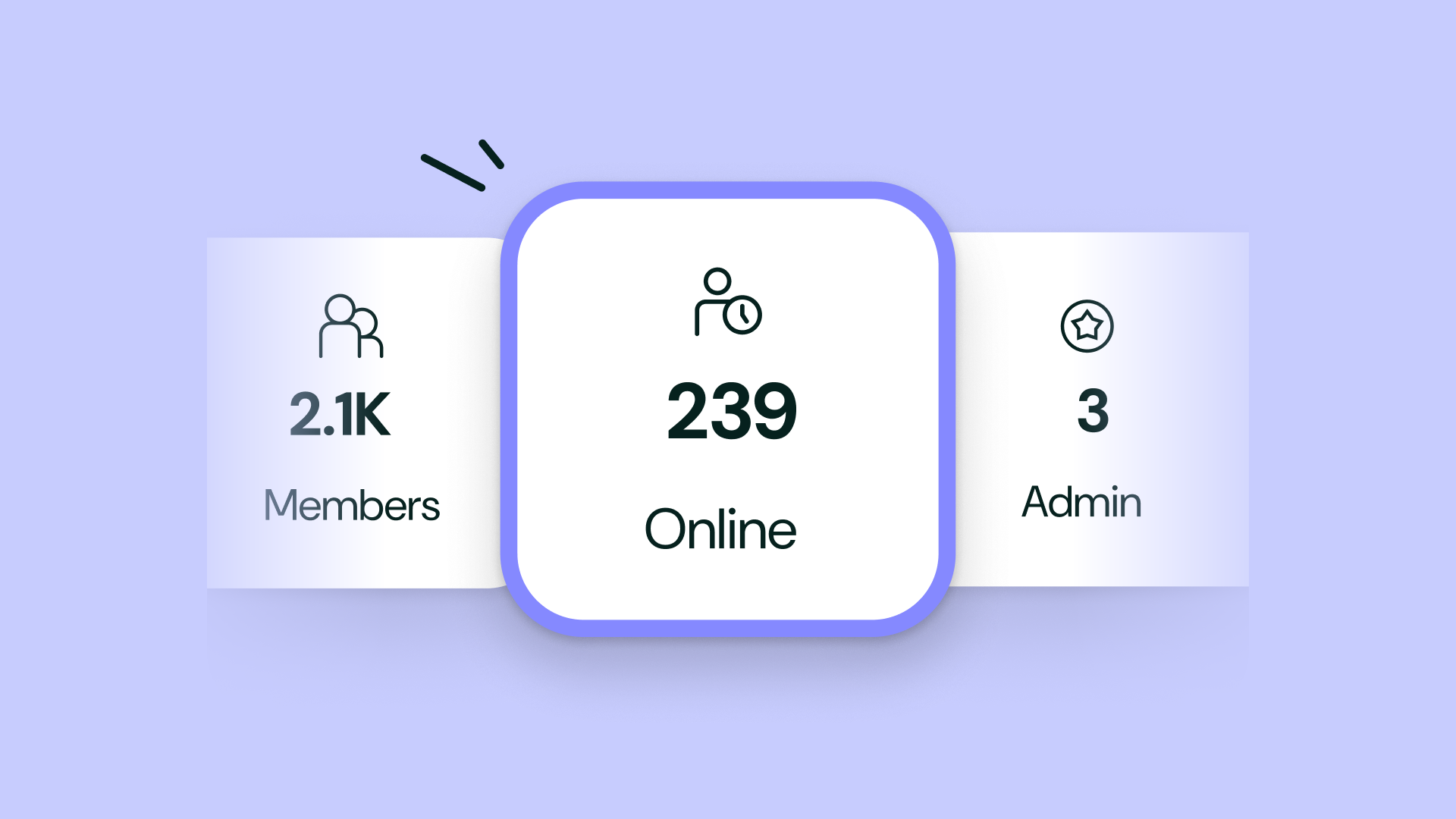Finding Your Membership Pricing Strategy: A Step-by-Step Guide
 Nathan Schenker
Nathan Schenker
Jul 18, 2025
Most people’s membership pricing strategy involves looking at what others are charging, maybe knock a few dollars off, and figuring that’s good enough. But pricing your membership this way could be costing you thousands in lost revenue, and you wouldn’t even know it.
Instead, what if your membership pricing models could confidently reflect the transformation you offer, attract your ideal members, and sustain business growth long-term?.
In this article, we’ll break down what a membership pricing strategy really means, why it matters, and how to build one based on your business’s reality and your audience’s psychology.
Why Membership Pricing Strategy Matters
A membership pricing strategy helps you choose how much to charge for access to your membership. It’s based on your business goals, what your offer includes, how much value it creates, and what your audience is willing to pay.
A clear pricing strategy helps you do three things:
- Faster Growth: Attract ideal members who understand your true value immediately
- Higher Retention: Keep members longer by aligning price with perceived value
- Predictable Revenue: Hit your income goals confidently, without guesswork
For example, if your membership price is $20/month but your average member costs you $15/month to support, your profit margins are too thin to scale. On the other hand, if you price too high without delivering the value to back it up, churn will creep in and kill your momentum.

Understanding Your Business and Goals
Before you try to answer the question, “How much does a membership cost?”, you need to understand the complex relationship between price and your business goals.
Here are a few things worth considering.
Know Your Expenses
How much does it cost you to run your membership each month? Include software tools, customer support, content creation, marketing, and your own time if you’re actively involved. If you’re paying a virtual assistant, a community manager, or hosting costs, factor that in as well.
Set Clear Financial Goals
How much revenue do you want this membership to generate? Think beyond “covering costs” and ask yourself what this membership is funding in your life or business. Is it meant to replace your salary? Fuel a team? Expand your impact? Your pricing strategy should take these goals into account.
Work Toward Desired Profitability
Profit isn’t what’s left over. It’s what you plan for. If you want a 40% margin, bake that into your pricing structure from the start, not at the end.
Exercise: Reverse-Engineer Your Income Goal
How much is a membership supposed to cost? Let’s say you want to earn $120,000 per year in take-home income from your membership.
And you would like your profit margin to be 40%. So $120,000 ÷ 0.4 = $300,000 in gross revenue. If you charge $30/month, that means you’ll need 834 members annually to hit that goal.
The next step is determining if that number of members is realistic for your platform based on your niche and marketing reach. If not, you’ll need to rethink your pricing, your growth plan, and even your long-term goals.

Your Product, Offer, and How Much to Charge for a Membership Site
Your price isn’t just a number. It’s a reflection of the transformation you deliver to your members. This means that what you charge should directly reflect the strength, depth, and transformation of your offer. So, before you even think about pricing, you need a clear understanding of what you're actually providing and how your membership improves someone’s life, business, or skill set along the way.
Start by asking yourself:
- What’s the core transformation?
Are you helping people lose weight, grow their business, become better parents, master a craft, or find community? The more tangible and desirable the transformation, the higher member price it can command. - What’s included in the experience?
Think beyond just content. Are your members getting access to you or a team? Live coaching? Personalized feedback? Templates, tools, a community forum, or accountability structures? - How is the offer structured?
A high-value, low-volume mastermind will help justify a different price than a self-paced membership with hundreds of participants. The delivery model, frequency of interaction, and scalability all influence what people are willing to pay. - Is your offer positioned as a must-have or a nice-to-have?
Pricing also depends on how essential your membership feels to your ideal member. If your offer solves an urgent, painful problem or provides a clear, ROI-driven benefit, you can command a higher price.
In short, when your product is built around real results, your price becomes more than just a number on a checkout page.
Assess the Tangible Value to Your Members
What’s it worth to them to achieve the result your membership promises? If you help freelance writers land $1,000/month clients, charging $49/month feels like a no-brainer. But if you offer casual content with no clear outcome, your price ceiling will be lower.

Time and Materials × Margin: A Simple Exercise to Assess Your Pricing Strategy
Tally up what you deliver in a month. Let’s say you provide:
- Two live calls (2 hours of your time)
- One new course module (4 hours of development)
- Access to a community (ongoing moderation)
If your time is worth $75/hour, that’s $450/month in time alone. Add software costs ($100/month) and support ($150/month). You’re at $700 in cost. Divide that by how many members you want to serve and add your margin.
If you want a 50% margin and aim for 100 members, you’d need to charge:
($700 ÷ 100) ÷ (1 – 0.5) = $14/month to break even, $28/month to turn a profit.
Evaluate Your Offer for Clarity and Alignment
Do your members clearly understand what they’re signing up for? Specific deliverables should back every promise you make. A well-communicated offer builds trust, sets the right expectations, and helps justify your price. So, spell out exactly what features your members will receive, and how they lead to real, valuable results.
Knowing Your Audience and Market
You can’t price well if you don’t know who you’re selling to. The right price depends on your audience’s goals, challenges, values, and financial comfort zone. Are they beginners looking for affordable guidance, or professionals ready to invest in a premium experience?
What alternatives are they comparing you to? This information also helps you avoid the trap of underpricing out of fear. When you know your market, you stop guessing and start aligning your pricing with what your audience truly values and is willing to pay.
Get Clear on Your Target Market
Get clear on your target market. Who is this membership for? A membership for beginner photographers will have a different price ceiling than one for established wedding professionals looking to grow a studio. Your audience’s experience level, income, subniche, goals, and urgency all influence what they’re willing to pay. The clearer you are on the finite details of who you serve, the easier it becomes to price in an aligned and compelling way.
Understand Their Willingness to Pay
Have real conversations with your audience. Ask them directly what they’ve paid for similar programs or how much solving their current problem is worth to them. Look at what tools, courses, or coaches they’re already spending money on. This can be accomplished by reading and responding to forum threads, comment sections, or shooting out a few emails to your existing email list.

Dig into Their Pain Points to Determine the Cost of Membership
People pay to make pain go away. What’s frustrating your audience right now? What do they wish was easier? If your membership can address those issues directly, you can charge more.
Gather Social Proof Early
When you show testimonials, case studies, or transformation stories, you need to justify your price through evidence instead of hype. It’s especially important if you’re raising prices or shifting to a higher tier.
Review Your Competitors
Do some research on others in your space. Not to copy them, but to understand the pricing landscape and what strategies they employ. For example, do they offer a reduced rate for billing annually versus monthly? Or, do they have four pricing tiers rather than three?
Understand Market Saturation and How to Stand Out
If the space is crowded with $19/month offers, you may need to position yourself differently. For example, you might niche down further, add premium coaching, or build a live support component. You can charge more if you’re meaningfully different.
Example: Competitive Snapshot
Let’s say you run a membership for yoga teachers:
- Competitor A: $19/month, pre-recorded flows
- Competitor B: $29/month, group mentorship and business tips
- You: $49/month, access to live coaching, business templates, and a private mastermind
Competitors A and B offer basic content, but your $49 membership offers transformative live coaching, done-for-you tools, and an exclusive mastermind experience. For members serious about results, your $49 price will be the obvious choice..
Core Membership Pricing Strategies
There’s no one right way to price a membership. But here are a few common strategies you can use to find a pricing framework for your membership.
Market-Based Pricing
This strategy sets your price based on what similar memberships in your market are charging. You gather data, find the average, and then position yourself relative to that range.
It’s a good place to start if you’re brand new, but don’t rely on it forever. Just because others are undercharging doesn’t mean you should too.
Quick Tip: Use this to establish a pricing floor and ceiling, not a final number.
Value-Based Pricing
This strategy prices your membership based on the results it creates and the perceived value for your customer.
It asks, “What’s the outcome worth to them?” not “What’s it worth to me to build?”
If your membership helps parents cut $500 a month in food waste, charging $29/month is an easy sell. You’ve made the price a no-brainer based on ROI.
Example: A membership that helps freelancers close more deals can justify a higher price than one that offers freelance job leads without guidance.
Cost-Plus Pricing (Optional Strategy)
This strategy starts with your costs (software, time, materials) and then adds a set markup for profit. It’s practical but risks ignoring customer perception. You could end up pricing too low or too high relative to the market unless you also account for audience behavior.
Best used: When your costs are substantial or variable, such as memberships with physical products or one-on-one coaching time.
Final Thoughts
Don’t pick a price because it “feels right.” Build one based on facts, goals, value, and audience expectations.
Set your pricing with the same care you’d use to build your membership content. Test, adjust, and don’t be afraid to raise your price when your value increases. If your membership changes lives or businesses, your pricing should reflect that.
And remember, your price isn’t just a number. It’s a signal. If you price with confidence, your audience will know the difference.



